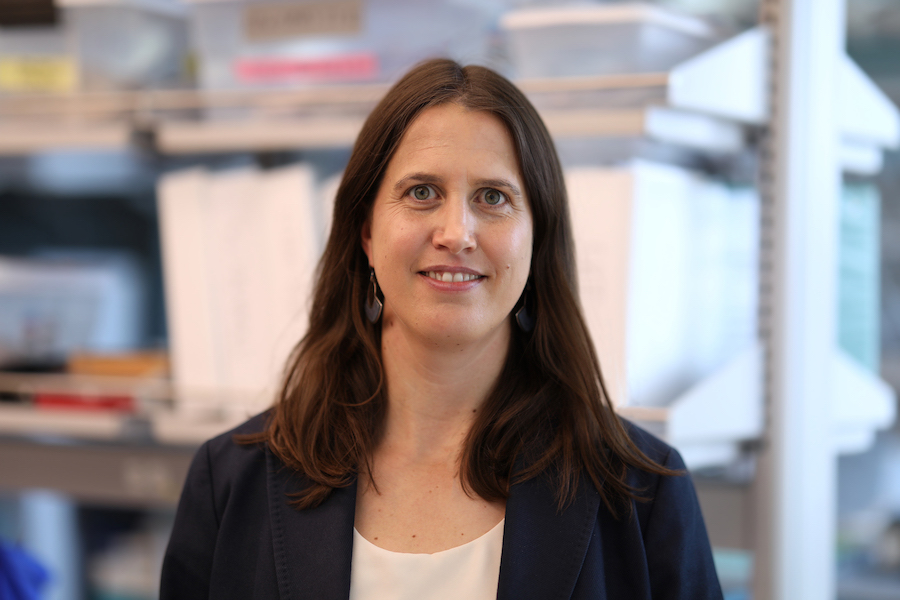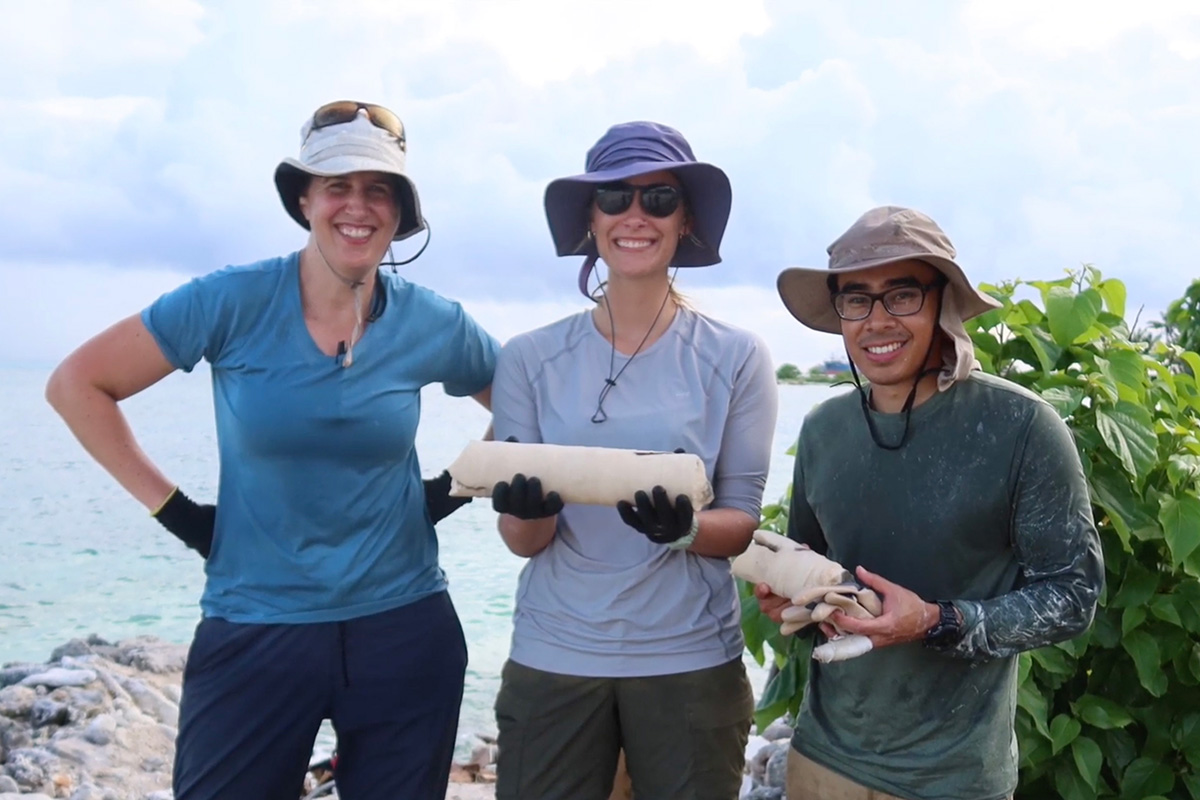In the field: FSU researchers travel across the globe to unravel the mysteries of El Niño

Stepping foot on the coral atoll of Kiritimati, also known as Christmas Island, for the first time in years, Alyssa Atwood had no idea the condition in which she would find its local coral reefs. In the years since she had last surveyed the island’s tropical waters, about 100 miles north of the equator and 5,000 miles from Florida, there was the possibility that changing temperatures and extreme climate events had decimated the communities of coral.
“Reefs around the world are having a hard time right now due to multiple anthropogenic stressors,” said Atwood, an assistant professor in Florida State University’s Department of Earth, Ocean and Atmospheric Science. “When we first began snorkeling, I was so happy to see the reef is in a better state of recovery than I expected, but we’ll see how it changes during this big El Niño event that is currently underway.”
Atwood and several FSU graduate students visited the remote island in the Republic of Kiribati, to conduct research that will aid in our understanding of a major global climate phenomenon, the El Niño/Southern Oscillation or ENSO. The research group is analyzing the remains of old coral skeletons — up to 7,000 years old — that are found on the island to study how changing ocean temperatures, rainfall, and extreme events associated with ENSO have transformed over time.
Travel to Christmas Island was delayed for several years, due to COVID-19 pandemic restrictions, so Atwood and the team were eager to restart their research program on the atoll. Before work could begin, however, they needed to reestablish their partnerships with local government and scientific agencies, evaluate the condition of their scientific equipment that had been stored for years in the island’s hot, humid climate, and set up a new air compressor to support future scuba diving activities in collaboration with the local Ministry of Fisheries.
“We weren’t sure what the state of our equipment would be, and we knew we needed to spend a lot of time paving the way for future research trips and reestablishing connections with our local partners. These are essential to maintaining our long-standing research program there, especially since it involves coordinating and collaborating with another community,” said David Hsu, a geography doctoral student with the FSU College of Social Sciences and Public Policy.
Christmas Island is a prime spot to study ENSO due to its location just north of the equator in the Pacific Ocean where ENSO events originate and where the phenomenon’s effects are most pronounced. ENSO is a cyclical fluctuation in sea surface temperature, air pressure, winds, and rainfall in the tropical Pacific with global consequences. It alters atmospheric circulation patterns, temperature, and precipitation at different places all around the globe, which can cause droughts, flooding, marine heatwaves, and even changes in hurricane activity.
“My research has focused on analyzing fossil coral samples in the lab and trying to determine how old they are, so it was incredible to get hands-on experience and see corals out in the field that I’ve worked with in the lab,” said chemical oceanography graduate student Taylor Conklin. “I’m working on reconstructing tropical Pacific climate records over the last millennium from these samples, and getting to see where samples come from was surreal.”
Corals are great indicators of temperature and salinity fluctuations in the tropical oceans due to their fast-growing nature, the sensitivity of the skeletal geochemistry to temperature and salinity variations in the surrounding seawater, and the preservation of their skeletons for thousands of years. The genus of coral the Atwood team works with grows up to 2 cm per year, producing seasonal banding patterns similar to rings in a tree, and can live for decades to centuries.
When coral skeletons are cut along their growth axis and their geochemistry is analyzed in millimeter increments, they provide monthly-resolved records of sea surface temperature and salinity in the central Pacific. By collecting coral records in Christmas Island that grew up to 7,000 years ago and comparing these records with modern data, the research team can reconstruct how ENSO patterns have changed over time. A key question they are studying is whether the frequency and strength of these events have changed as the climate system has warmed over the post-industrial era.

“When we combine lots of coral records that grew at different times in the past, we can piece together long, high-resolution climate records that allow us to contextualize the changes we’re seeing today,” Atwood said. “By measuring the oxygen isotope composition and a variety of trace elements in the coral skeleton, which track a combination of changes in ocean temperature and salinity, we’re able to resolve large, relatively short-lived ENSO events as well as longer term changes in ocean conditions.”
While Conklin handles fossil coral specimens in the Atwood Lab, Hsu specializes in climate modeling and understanding how tropical precipitation patterns changed during past periods characterized by abrupt climate change.
“My model simulations rely on data collected in the field, so being there in person and seeing the whole process first-hand was a great experience,” Hsu said. “Now when I work with models, I look at data differently because I have a more holistic understanding of where it comes from.”
Now back in Tallahassee, researchers are processing their samples, working to publish their findings, and pending approval of a renewed research permit, they hope to return to Christmas Island to observe the current El Niño event’s effects on the reef after it peaks at the end of the year.
To learn more about Atwood’s research and the El Niño and the Southern Oscillation, visit eoas.fsu.edu.

